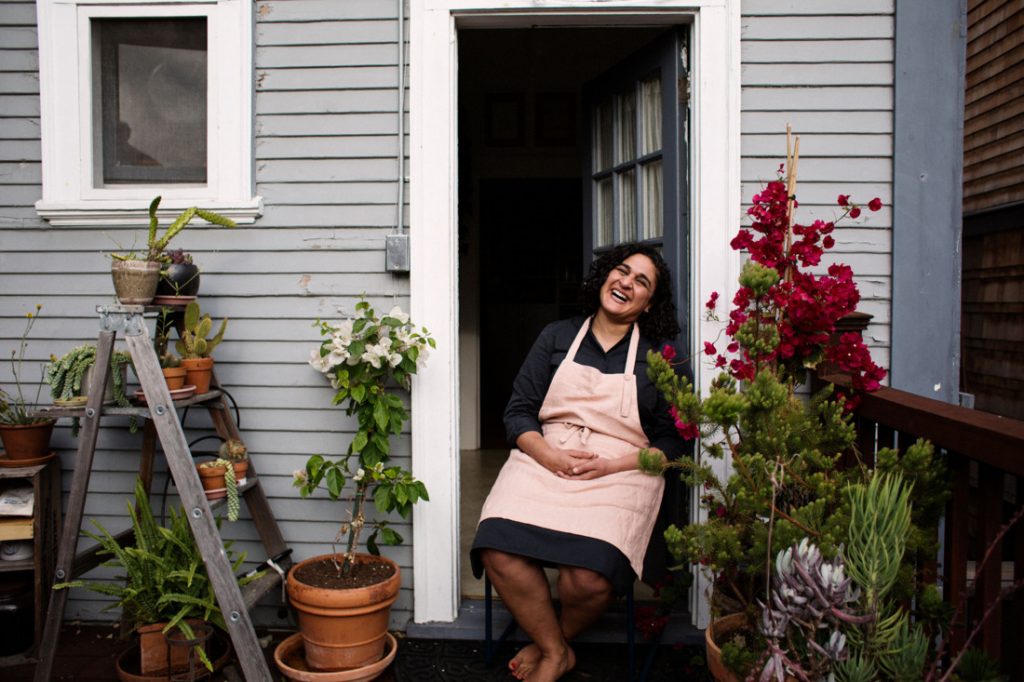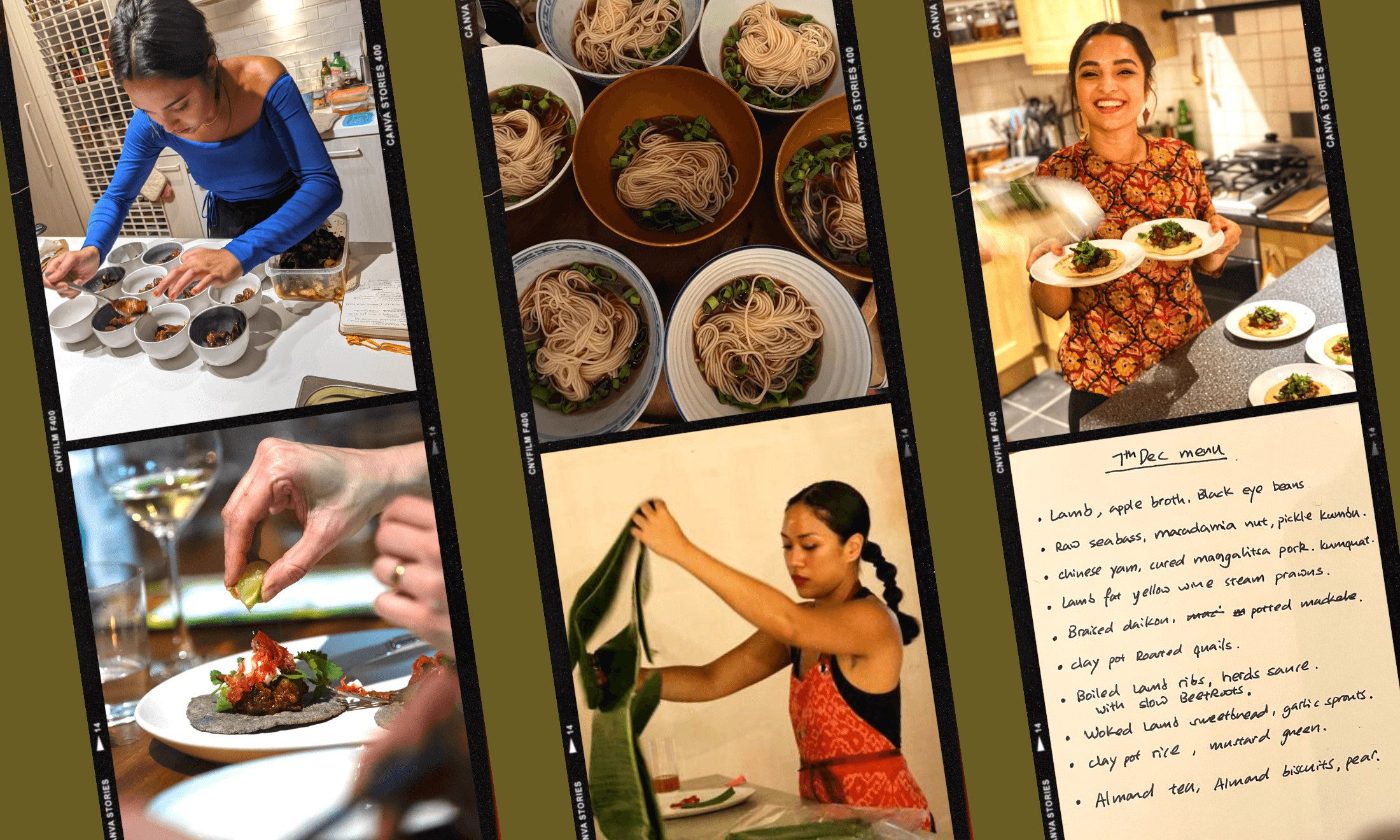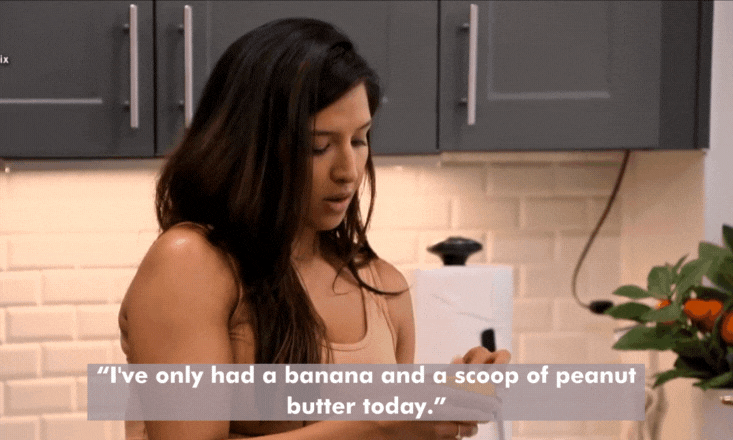
Why Netflix food show ‘Salt, Fat, Acid, Heat’ means so much to women of colour
Anviksha Patel
15 Nov 2018
via Netflix
Despite being a ground-breaking show for its effortless emphasis on home cooking, Netflix’s Salt, Fat, Acid, Heat host Samin Nosrat brings something new to the dinner table – just by being an Iranian woman. It is a fair understatement to say that the food world is dominated by men. When women and people of colour make up a large part of the industry, it hasn’t gone unnoticed that mainly white men are being commended for their work. In Netflix’s Chef’s Table, out of the 24 chefs profiled, only five have been men of colour, and three women of colour. (Note: Two of the Four episodes in the most recent season have profiled women of colour, Cristina Martinez and Bo Songvisava respectively. Plus Asma Khan and Mashama Bailey will be featured in season 6).
Sharing its namesake with Nosrat’s 2017 best-selling cookbook, Salt, Fat, Acid, Heat’s four episodes each focus on an essential element of cooking in a special location. In the salt episode, Nosrat travels to Japan, a cuisine boasting 4000 types of salt, all for varying uses. She explains that mastering the essentials is the first step to being a good cook and excellent cooking doesn’t require a Michelin star. This is comforting advice as an amateur cook. Learning the basics of Indian cooking was drilled into me as a teenager. Although I pushed back on my mother’s advice at the time (sorry mamma), it is only now I realise how imperative it is to learn that, for example, cooking spices out in the primary stages can differentiate between a mediocre curry and a great curry that is almost as good as mum’s.

via Netflix
Granted, home cooking isn’t about perfection. It is about practice and Nosrat demonstrates that she is no stranger to the odd slipup. She cries whilst chopping onions, she pokes her focaccia bread dough a little too hard, she worries about burning the rice for her tahdig (Persian rice with a crispy crust). She is just like us. And that is the beauty of Salt, Fat, Acid, Heat and Nosrat herself. The relatability of the show is a rare commodity in a sea of haute-cuisine shows touted by arrogant male chefs.
The home cooks are the unsung heroes of the programme, but it was not without significant effort to find the right ones. In an interview with the Guardian, Nosrat explains that from the initial stage, there was intentional inclusion of home cooks who deserve a platform, particularly women of colour, but describes the difficulty during production as the top searches for culinary experts on location were, more often than not, white men.
“The relatability of the show is a rare commodity in a sea of haute-cuisine shows touted by arrogant male chefs.”
When Nosrat meets with these celebrated locals from across the globe in their respective homes, they graciously share family recipes. The Italian nonna making pesto, marinating turkey for traditional pavo en escabeche (turkey and meatball stew) with Doña Conchi, and of course, what food programme wouldn’t be complete without a cookery lesson from the matriarch.
Nosrat learns how to make Persian staple tahdig from her mother Shahla Khazai during the heat episode, and it’s not hard to see the pressure she faces to make a good tahdig. “Tahdig test: It’s the first test before the ‘give birth to a child’ test,” says Nosrat. Her hesitance not to mess up her mother’s instructions is laughably relatable. Making a cuisine staple in front of your mother can make any person’s hands tremble. Yes, it’s steeped in tradition and history, and yes, you better believe I will follow instructions to the letter so as not to upset the ancestors.
Yet, Nosrat’s interpretations of the traditional dishes she learns from her travels teach a vital lesson in rebelling against the rules. Making something delicious doesn’t have to follow the traditional recipe or ingredients stated. Nosrat stresses that beautiful food should be for everybody, it should be accessible, so why not veer from the rules if it suits you. That is the defining quality of a good cook; learning what works for you and making it still taste good. And if it doesn’t work, then there’s always next time.

via Netflix
Not only is Salt, Fat, Acid, Heat a pure joy to watch for the food porn, but Nosrat exudes this friendly relatability that the repetitive white male bravado can never compete with. Her infectious laugh and expressive reactions to sampling new food makes you almost feel like you’re there with her. She is a friend to every viewer. She takes giant bites of food, her face screams in delight when eating ice cream. She is the perfect dinner guest.
So as my love letter to Ms. Nosrat ends, I have one thing left to say. Samin, let’s have brunch and exchange family recipes. I’ve got a chilli paneer recipe that will blow your mind, and your mouth.









